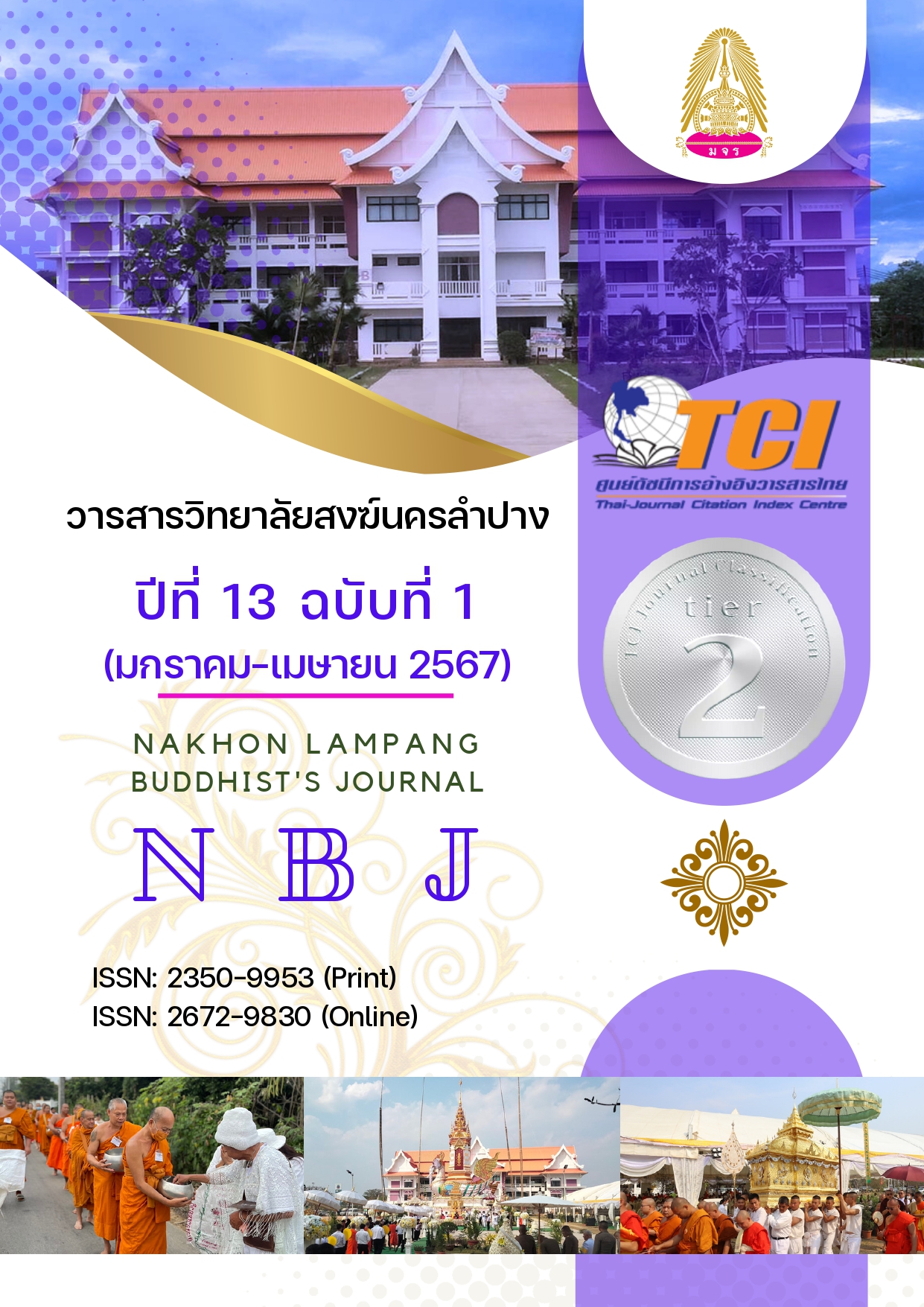ผลของการเข้าร่วมโปรแกรมการออกกำลังกายด้วยรูปแบบกีฬาพื้นบ้านไทย จิกเส้นที่มีต่อสมรรถภาพทางกายของเยาวชน
Main Article Content
บทคัดย่อ
การวิจัยในครั้งนี้เป็นการวิจัยเชิงทดลอง มีวัตถุประสงค์เพื่อศึกษาผลของการเข้าร่วมโปรแกรมออกกำลังกายด้วยรูปแบบกีฬาพื้นบ้านไทยจิกเส้นที่มีต่อสมรรถภาพทางกายของเยาวชน กลุ่มตัวอย่างเป็นเยาวชนสุขภาพดี จำนวน 60 คน แบ่งเป็นกลุ่มทดลอง จำนวน 30 คน (อายุเฉลี่ย 18.53 ± 0.63 ปี, Max=20 ปี, Min=18 ปี) และกลุ่มควบคุม จำนวน 30 คน (อายุเฉลี่ย 18.60 ± 0.56 ปี, Max=20 ปี, Min=18 ปี) คัดเลือกตัวอย่างเพื่อเข้าร่วมโครงการวิจัยแบบเฉพาะเจาะจง และคัดเลือกตัวอย่างเพื่อเข้ากลุ่มทดลองและกลุ่มควบคุม โดยการจับคู่ซึ่งใช้ค่าดัชนีมวลกายเป็นเกณฑ์ เครื่องมือที่ใช้ในการวิจัยประกอบด้วย โปรแกรมออกกำลังกายด้วยรูปแบบกีฬาพื้นบ้านไทยจิกเส้น ที่คณะผู้วิจัยพัฒนาขึ้น และแบบทดสอบสมรรถภาพทางกาย ซึ่งประกอบด้วย 5 รายการทดสอบ ได้แก่ ดัชนีมวลกาย นั่งงอตัวไปข้างหน้า แรงบีบมือ ยืน-นั่ง บนเก้าอี้ 60 วินาที และยืนยกเข่าขึ้นลง 3 นาที โดยกลุ่มทดลองได้เข้าร่วมโปรแกรมออกกำลังกายด้วยรูปแบบกีฬาพื้นบ้านไทยจิกเส้น เป็นเวลา 60 นาที/วัน ทำการฝึกทั้งสิ้น 3 วัน/สัปดาห์ เป็นเวลาทั้งสิ้น 8 สัปดาห์ ส่วนกลุ่มควบคุม ได้รับคำแนะนำให้ดำเนินชีวิตตามปกติ ไม่เข้าร่วมกิจกรรมทางกาย/โปรแกรมการออกกำลังกายใด ๆ ในระหว่างการทดลอง วิเคราะห์ข้อมูลพื้นฐานโดยใช้ค่าร้อยละ ค่าเฉลี่ยเลขคณิต และค่าส่วนเบี่ยงเบนมาตรฐาน เปรียบเทียบความแตกต่างของผลการทดสอบสมรรถภาพทางกายโดยใช้ค่าที (t-test) ที่ระดับความมีนัยสำคัญทางสถิติ .05
ผลการวิจัยพบว่า
1.ไม่พบความแตกต่างของค่าเฉลี่ยผลการทดสอบสมรรถภาพทางกายระหว่างกลุ่มทดลองและกลุ่มควบคุม ทั้งก่อนการทดลอง และหลังการทดลองสัปดาห์ที่ 8 ที่ระดับนัยสำคัญทางสถิติ 0.05 แต่พบว่าผลการทดสอบสมรรถภาพทางกายหลังทดลองสัปดาห์ที่ 8 ในกลุ่มทดลอง มีแนวโน้มที่ดีขึ้นในทุกรายการทดสอบ
2.พบความแตกต่างของค่าเฉลี่ยผลการทดสอบดัชนีมวลกาย ระหว่างก่อนการทดลอง และหลังการทดลองสัปดาห์ที่ 8 ที่ระดับนัยสำคัญทางสถิติ 0.05 ในตัวอย่างกลุ่มทดลอง
สรุปได้ว่าการเข้าร่วมโปรแกรมออกกำลังกายด้วยรูปแบบกีฬาพื้นบ้านไทยจิกเส้น สามารถช่วยลดดัชนีมวลกายในกลุ่มเยาวชน และสามารถใช้เป็นกิจกรรมทางเลือกเพื่อส่งเสริมการมีกิจกรรมทางกายที่เพียงพอในกลุ่มเยาวชนได้
Article Details

อนุญาตภายใต้เงื่อนไข Creative Commons Attribution-NonCommercial-NoDerivatives 4.0 International License.
เอกสารอ้างอิง
Amornsriwattanakul, A., et al. (2023). Plan to promote physical activity for children and youth (2023 - 2030). Bangkok: Thai Health Promotion Foundation.
Aubert, S. et al. (2021). Global prevalence of physical activity for children and adolescents; inconsistencies, research gaps, and recommendations: a narrative review. Int J Behav Nutr Phys Act, 18(1), 81.
Bull, F.C. et al. (2020). Document details - World Health Organization 2020 guidelines on physical activity and sedentary behaviour. British Journal of Sports Medicine, 54(24), 1451-1462.
Department of Physical Education. (2019). Manuals, tests, and physical fitness standards for children, youth, and Thai citizens. Bangkok: Department of Physical Education.
Faul, F., Erdfelder, E., Buchner, A., & Lang, A.G. (2009). Statistical power analyses using G*Power 3.1: Tests for correlation and regression analyses. Behavior Research Methods, 41, 1149-1160.
Garcia-Hermoso, A. et al. (2022). Adherence to aerobic and muscle-strengthening activities guidelines: a systematic review and meta-analysis of 3.3 million participants across 32 countries. Br J Sports Med, 57(4), 225-229.
Guthold, R., Stevens, G.A., Riley, L.M., & Bull, F.C. (2020). Global trends in insufficient physical activity among adolescents: a pooled analysis of 298 population-based surveys with 1·6 million participants. Lancet Child Adolesc Health, 4(1), 23-35.
Katewongsa, P. et al. (2021). The effects of the COVID-19 pandemic on the physical activity of the Thai population: Evidence from Thailand's Surveillance on Physical Activity 2020. Journal of Sport and Health Science, 10(3), 341-348.
Kawjaratwilai, T. (2016). Creation of ancient Muay Thai Exercises Model for Youth. Journal of Education, Khon Kaen University (EDKKUJ), 39(2), 77-86.
National Committee for the Promotion of Child and Youth Development. (2018). The 2nd National Child and Youth Development Plan, 2017–2021. Bangkok, Thailand: JS Publishing.
Office of Recreation, Department of Physical Education. (2017). Thai folk games. Bangkok: Department of Physical Education, Ministry of Tourism and Sports.
Park, J., et al. (2014). The relationship of body composition to daily physical activity in free-living Japanese adult men. Br J Nutr., 111(1), 182-8.
Paso, P. & Chuwet, P. (2022). The Effects of Isan Recreational Folk Game Program on Youths’ Physical Fitness and Stress Level. Journal of SaengKhomKham Buddhist Studies, 7(1), 47-64.
Paulo Dos Anjos Souza Barbosa, J., et al. (2019). Walkability, Overweight, and Obesity in Adults: A Systematic Review of Observational Studies. Int J Environ Res Public Health, 16(17), 3135.
Phonchan, B., & Tanphanich, T. (2022). The Comparison of Effects between Folk Regional Program and Rhythmic Activities up on Health-Related Physical Fitness of Kasetsart University. Silpakorn Educational Research Journal, 14(2), 377-393.
Prasertsuk, P. & Sivabaedya, S. (2014). The effect of thai folk plays on problems solving ability. Journal of Education Khon Kaen University (Graduate Studies Research) (EDGKKUJ), 8(3), 244–254.
Ribas, J.P., et al. (2023). How to understand sports and traditional games and how to apply it to physical education. On the “Goal of Game”. Front Sports Act Living, 5, 1123340. Doi: 10.3389/fspor.2023.1123340.
Sasanasart, M. (2022). The effect of games and the lead-up games for physical fitness’s improvement at the private islam religious school in three southern border province. NRRU Community Research Journal, 16(1), 129-140.
Singrungruang, P. (2021). The Effects of the Physical Educational Activity Management by Using Korat Folk Games to Develop Nakhon Ratchasima Rajabhat University Students’ Creative Thinking. Journal of Research and Development Institute Rajabhat Maha Sarakham University, 8(2), 61-74.
Sisaket Rajabhat University. (2022). Information on graduate production. Retrieved November 3, 2022, from http://www.oass.sskru.ac.th/oass5.html
Strath, S. et al. (2007). Walking and metabolic syndrome in older adults. J Phys Act Health, 4(4), 397-410.
Thongterm, T. (2013). Folk games to promote health and complete humanity in a multicultural society. (Research Report). Sisaket Rajabhat University. Sisaket.
Tongterm, T. et al. (2023). Jig Sen : The Development of Thai Folk Play to Recreational Sport for Youth. National Academic Conference Health Education, Physical Education and Recreation Association of Thailand (9 - 11 August 2023). 124-143.
Widyastari, D. et al. (2022). Results from the Thailand 2022 report card on physical activity for children and youth. J Exerc Sci Fit, 20(4), 276–282.

